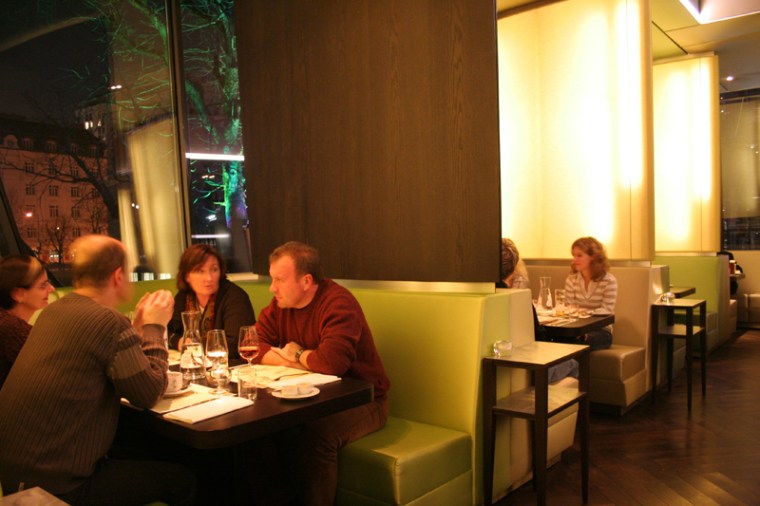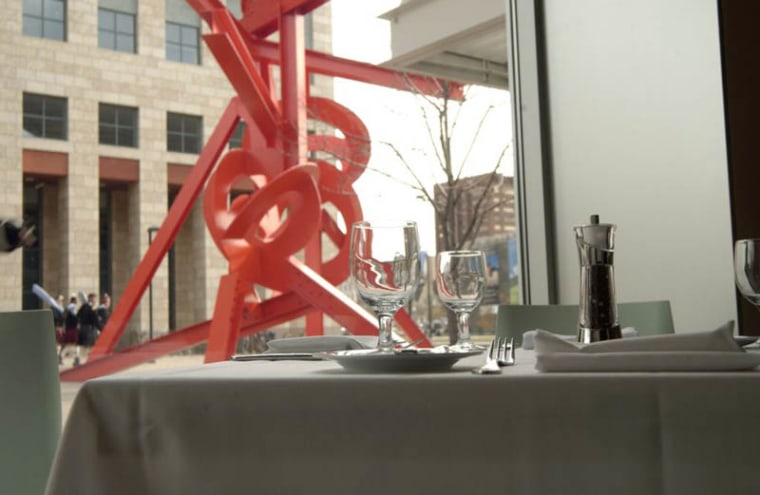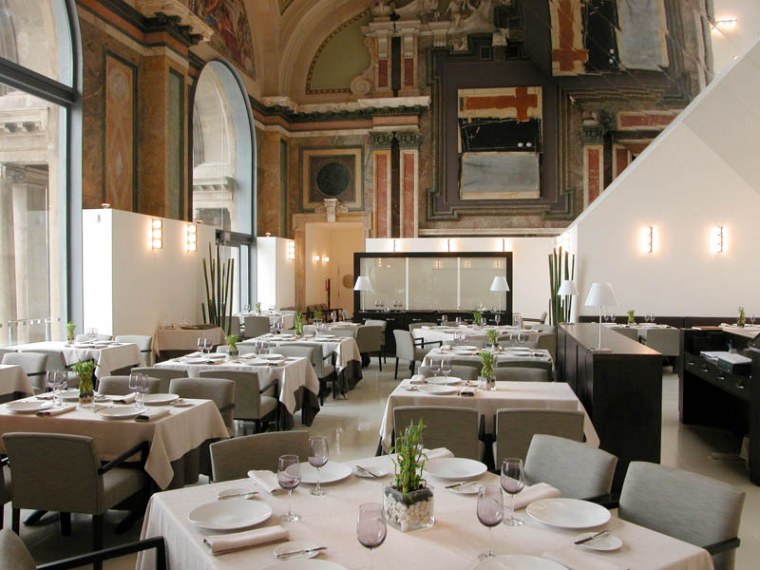When the late satirist Peter De Vries launched into a trademark condemnation of the morganatic marriage between art and food, his appraisal seemed downright prophetic. “The murals in restaurants,” the prolific author declared, “are on par with the food in museums.” But while the brilliant analogy might have once been accurate, it no longer rings true for many museums.
From Barcelona to Boston and Seattle to Singapore, top-rated chefs and visionary restaurateurs together with perspicacious museum directors are collaborating on multi-million dollar projects that are bringing haute gastronomy into the once sober sanctuaries of culture. These are not glorified cafeteria-style eateries. Created in partnership with leading architecture firms, catering consultants and interior designers, they’re rousing culinary outposts that, in some cases, overshadow the very paintings, sculptures and objet trouvés these cultural institutions were built to showcase.
“We’re now getting more interest from visitors about the menu at Oleum than we are about our collection,” says a dispirited cicerone at Barcelona’s Museu Nacional d'Art de Catalunya, referring to the much trumpeted in-house eatery, which boasts seasonal Mediterranean fare and superb views of the city’s skyline from its perch on Montjüic hill. But gazing outward at Plaça d’Espany’s Venetian towers, the guide concedes, “Even Romanesque paintings can’t compare with this view or the tasty food.”
The same is true at the futuristic Centre Pompidou in Paris, where each day the hip crowd settles in for the inventive Eurasian portions of restaurateur Thierry Costes, complemented by eye-catching panoramas of the French capital as far as Sacré-Coeur from the raw-boned sixth-floor eatery, Georges. And it’s a similar story on this side of the Atlantic. At 20•21 Restaurant, housed in the Herzog & de Meuron-designed addition to the Walker Art Center in Minneapolis, chic epicures wade into petite fusion rations conceived by Wolfgang Puck while taking in floor-to-ceiling views of downtown Minneapolis.
In an attempt to provide a more complete and fulfilling visitor experience and to boost their revenues and attract prospective donors, more and more cultural institutions are broadening their appeal to attract more than just staid culture vultures. So in addition to bookshops that sell much more than coffee-table tomes and cafés that double as moody bars-cum-lounges, museums are incorporating various dining options, many of them high-end, to improve the overall experience, say industry observers.
“Museums of all types and sizes are always exploring ways to provide a dynamic and fulfilling visitor experience to visitors with varying interests,” says Ford Bell, the President of the Washington, D.C.-based Association of Museums. “One element of that is providing unique dining experiences.”

In fact, according to a recent survey by the AAM, 22 percent of their members have some sort of foodservice in-house; that number jumps to 54 percent for art museums, which have full-service restaurants, according to the master’s thesis of Crissa Van Vleck Williams at John F. Kennedy University.
Danny Meyer’s The Modern at New York’s refurbished MoMA overlooks the celebrated courtyard sculpture garden and features the innovative Alsatian handiwork of chef Gabriel Kreuther, served within eyeshot of Picassos, Calders and Mirós. Showered with praise since its opening in 2004, it heralded in a new age of über upper-echelon eateries where it’s no longer uncommon to find main courses reaching the $40 barrier, which is exactly what a 1¾-ounce appetizer portion of lobster costs.
The fact that MoMA’s bounty of priceless art is often mentioned in the same breathless manner as Kreuther’s culinary élan doesn’t surprise Arthur M. Manask, author of "The Complete Guide to Foodservice in Cultural Institutions" and president and CEO of his eponymous Burbank, California-based consulting firm. “What I hear from museum directors is they want their restaurants to become an attraction, a draw and they want their restaurants to be an integral part of the guests and visitor experience,” he says.
That’s certainly true at the Denver Art Museum, where Palettes, headed up by Executive Chef Kevin Taylor (whose namesake eatery in the boutique Hotel Teatro is highly regarded by local foodies), has been a local institution for 10 years running. Newly relaunched in a fresh commodious space, it continues to serve contemporary American dishes to locals and visitors alike.
Says Manask of this new dynamic, “The reality is that if a percentage of customers are coming because of the restaurant, some percentage are coming to museums that wouldn’t otherwise come and be exposed to your collection, which can translate into new members and donors.”
That’s exactly what’s happening in Vienna, where acclaimed chef Helmut Österreicher has been whipping up modern Viennese cuisine beneath the intricate wood-paneled ceilings of the otherwise arcane Museum of Applied Arts. Here, new modernist fixtures and a glass addition to the garden are juxtaposed with the classical elements of the Tuscan Renaissance structure’s palatial drawing room, making for a dynamic setting.
Equally bold is the 48-seat Novus restaurant in Singapore’s colonial-style National Museum, which lures urbane gastronomes with plush Paul Smith interiors, fixtures by furniture designer Jasper Morrison and the light continental touch of Aussie toque Dan Masters.
According to Bell, “For some museums, foodservice and dining options are an extension of the museum’s mission—providing dining options that represent the people, cultures or stories that the museum strives to preserve and interpret.” In the case of Singapore, it is that city-states forward-looking ethos.

“Generally speaking, museum directors in the art museum world want to have restaurants that reflect their museum [collection],” says Manask, citing the Dallas Museum of Art, a client, as an example. “They told us that they like their restaurant to be reflective of the fact that they are an encyclopedic museum,” he says, referring to an industry term that describes an institution whose bounty spans all cultures and periods and does not specialize on any one period or culture.
And to the naysayers who deride these outposts of poshness as just revenue-generating juggernauts that water down the cultural experience, Manask says: “All of these museums don’t look at the restaurants to be cash-cows or major areas of revenue. In fact, the restaurants are not profit centers and contribute only a relatively small return that usually covers basics like the costs of utilities and repairs and maintenance.”
For patrons, though, those are semantics. After all, how can anyone denounce tucking into a carefully prepared prix fixe of nouvelle cuisine while gazing at an Old Masters painting?
